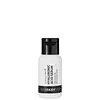What's inside
What's inside
 Key Ingredients
Key Ingredients

 Benefits
Benefits

 Concerns
Concerns

No concerns
 Ingredients Side-by-side
Ingredients Side-by-side

Water
Skin ConditioningPropanediol
SolventGlycerin
HumectantButylene Glycol
HumectantSodium Hyaluronate
HumectantAmmonium Acryloyldimethyltaurate/Vp Copolymer
Leuconostoc/Radish Root Ferment Filtrate
AntimicrobialHyaluronic Acid
HumectantCarbomer
Emulsion StabilisingPolysorbate 20
EmulsifyingPalmitoyl Tetrapeptide-7
Skin ConditioningPalmitoyl Tripeptide-1
Skin ConditioningPhenoxyethanol
PreservativeWater
Skin ConditioningGlycerin
HumectantSodium Lauroyl Lactylate
EmulsifyingSodium Hyaluronate
HumectantPolysorbate 20
EmulsifyingCaprylic/Capric Triglyceride
MaskingPEG/PPG-14/4 Dimethicone
EmulsifyingXanthan Gum
EmulsifyingDisodium EDTA
Sodium Cocoyl Amino Acids
CleansingCeramide NP
Skin ConditioningEthylhexylglycerin
Skin ConditioningEpilobium Angustifolium Extract
Skin ConditioningCeramide AP
Skin ConditioningCholesterol
EmollientPhytosphingosine
Skin ConditioningBeta-Glucan
Skin ConditioningSarcosine
Skin ConditioningCarbomer
Emulsion StabilisingChrysanthemum Parthenium Flower Extract
Skin ConditioningSea Whip Extract
Skin ConditioningGlycine Soja Seed Extract
Skin ConditioningHyaluronic Acid
HumectantGlycyrrhiza Glabra Root Extract
BleachingCeramide EOP
Skin ConditioningMagnesium Aspartate
Skin ConditioningPotassium Aspartate
Skin ConditioningUbiquinone
AntioxidantPhenoxyethanol
Preservative1,2-Hexanediol
Skin ConditioningCaprylyl Glycol
EmollientLeuconostoc/Radish Root Ferment Filtrate
AntimicrobialCalcium Chloride
AstringentPropylene Glycol
HumectantTocopherol
AntioxidantSodium Metabisulfite
AntioxidantPentaerythrityl Tetra-Di-T-Butyl Hydroxyhydrocinnamate
AntioxidantSodium Benzoate
MaskingPotassium Sorbate
PreservativeWater, Glycerin, Sodium Lauroyl Lactylate, Sodium Hyaluronate, Polysorbate 20, Caprylic/Capric Triglyceride, PEG/PPG-14/4 Dimethicone, Xanthan Gum, Disodium EDTA, Sodium Cocoyl Amino Acids, Ceramide NP, Ethylhexylglycerin, Epilobium Angustifolium Extract, Ceramide AP, Cholesterol, Phytosphingosine, Beta-Glucan, Sarcosine, Carbomer, Chrysanthemum Parthenium Flower Extract, Sea Whip Extract, Glycine Soja Seed Extract, Hyaluronic Acid, Glycyrrhiza Glabra Root Extract, Ceramide EOP, Magnesium Aspartate, Potassium Aspartate, Ubiquinone, Phenoxyethanol, 1,2-Hexanediol, Caprylyl Glycol, Leuconostoc/Radish Root Ferment Filtrate, Calcium Chloride, Propylene Glycol, Tocopherol, Sodium Metabisulfite, Pentaerythrityl Tetra-Di-T-Butyl Hydroxyhydrocinnamate, Sodium Benzoate, Potassium Sorbate
 Reviews
Reviews

Ingredients Explained
These ingredients are found in both products.
Ingredients higher up in an ingredient list are typically present in a larger amount.
Carbomer is a polymer of acrylic acid. Its main role is to create a gel consistency.
A high amount of carbomer can cause pilling or balling up of products. Don't worry, most products contain 1% or less of carbomer.
Glycerin is already naturally found in your skin. It helps moisturize and protect your skin.
A study from 2016 found glycerin to be more effective as a humectant than AHAs and hyaluronic acid.
As a humectant, it helps the skin stay hydrated by pulling moisture to your skin. The low molecular weight of glycerin allows it to pull moisture into the deeper layers of your skin.
Hydrated skin improves your skin barrier; Your skin barrier helps protect against irritants and bacteria.
Glycerin has also been found to have antimicrobial and antiviral properties. Due to these properties, glycerin is often used in wound and burn treatments.
In cosmetics, glycerin is usually derived from plants such as soybean or palm. However, it can also be sourced from animals, such as tallow or animal fat.
This ingredient is organic, colorless, odorless, and non-toxic.
Glycerin is the name for this ingredient in American English. British English uses Glycerol/Glycerine.
Learn more about GlycerinHyaluronic acid is naturally found in healthy skin. It is a humectant, meaning it draws moisture to your skin.
This ingredient helps hydrate, soothe, and protect the skin.
What makes hyaluronic acid so hydrating? It has the capacity to bind or hold large amounts of water.
Fun fact: It is already naturally found in our bodies, such as the fluids of our eyes and our joints.
Studies find this ingredient to have anti-inflammatory and anti-microbial properties. This can help speed up wound-healing.
Hyaluronic acid can be irritating if the molecule has a low-molecular weight, or if the molecules are small.
One study found low-molecular weight hyaluronic acid to be pro-inflammatory, meaning some people may experience irritation. This is because our bodies use hyaluronic acid in the wound-healing process to signal to our bodies, via irritation, that something needs healing.
The same study found high-molecular weight hyaluronic acid to be anti-inflammatory.
These are some other common types of Hyaluronic Acid:
Learn more about Hyaluronic AcidLeuconostoc/Radish Root Ferment Filtrate is a natural preservative. It comes from fermenting radish roots with a bacteria called leuconostoc.
Leuconostoc comes from lactic acid.
This ingredient has antimicrobial properties and helps prevent the growth of bacteria in a product.
Leuconostoc is used to make the traditional Korean side-dish, kimchi. It is also used to make sourdough bread (both incredibly yummy foods).
Learn more about Leuconostoc/Radish Root Ferment FiltratePhenoxyethanol is a preservative that has germicide, antimicrobial, and aromatic properties. Studies show that phenoxyethanol can prevent microbial growth. By itself, it has a scent that is similar to that of a rose.
It's often used in formulations along with Caprylyl Glycol to preserve the shelf life of products.
Polysorbate 20 is made by combining ethoxylation of sorbitan, ethylene oxide, and lauric acid. It is a mild cleansing agent, surfactant, and emulsifier.
As a surfactant, it helps collect dirt and oils for washing. Emulsifiers prevent oils and water from separating.
Polysorbate 20 also adds scent to a product. Since it is made using sorbitol, it has a sweet scent. Sorbitol can also be found in fruits such as apples and peaches.
The lauric acid used to create Polysorbate 20 is often derived from coconuts.
Polysorbate 20 may not be fungal acne safe.
Learn more about Polysorbate 20Sodium Hyaluronate is hyaluronic acid's salt form. It is commonly derived from the sodium salt of hyaluronic acid.
Like hyaluronic acid, it is great at holding water and acts as a humectant. This makes it a great skin hydrating ingredient.
Sodium Hyaluronate is naturally occurring in our bodies and is mostly found in eye fluid and joints.
These are some other common types of Hyaluronic Acid:
Learn more about Sodium HyaluronateWater. It's the most common cosmetic ingredient of all. You'll usually see it at the top of ingredient lists, meaning that it makes up the largest part of the product.
So why is it so popular? Water most often acts as a solvent - this means that it helps dissolve other ingredients into the formulation.
You'll also recognize water as that liquid we all need to stay alive. If you see this, drink a glass of water. Stay hydrated!
Learn more about Water